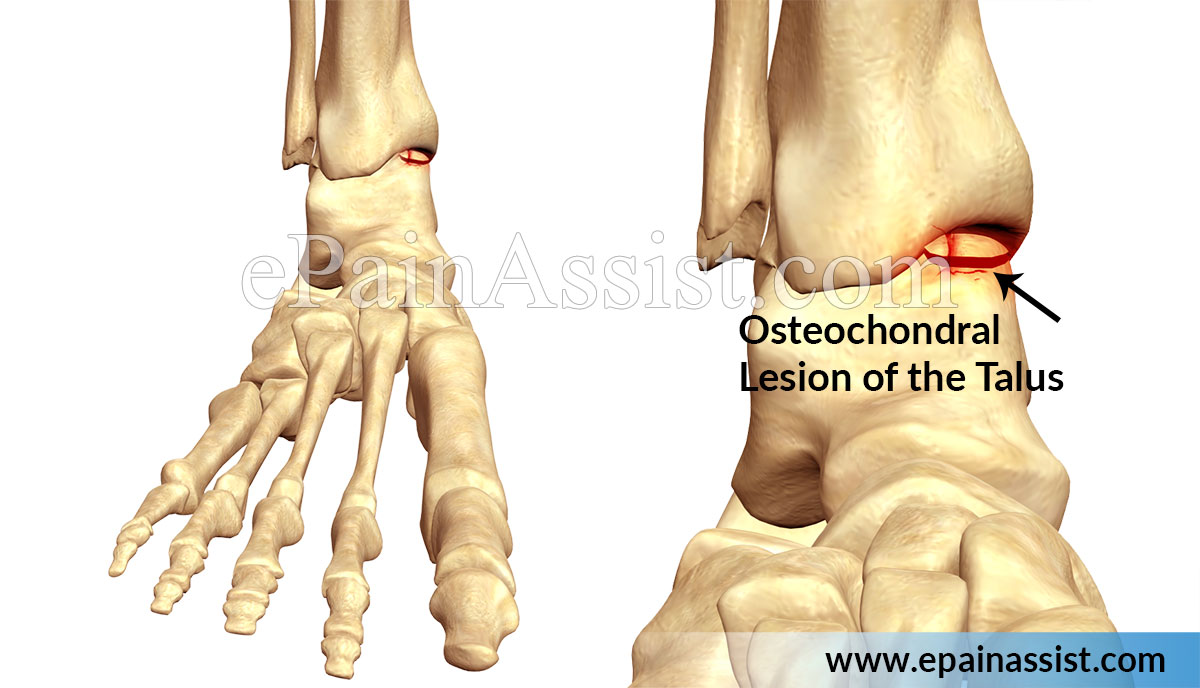What Is Osteochondral Lesion of The Talus?
Osteochondral lesion of the talus, also known as OLT, is a disorder, which consists of a section of damaged cartilage. There is also a bone on top of the talus. It is also termed as Osteochondritis Dissecans of the talus. This condition is commonly seen with traumatic injuries like acute ankle sprain; although, the ankle joint misalignment due to chronic overuse also can lead to this condition. A sprain can also lead to osteochondral fractures but such fractures generally are not able to be detected. After the sprain is treated, there is improvement to some degree, but is still continues to be bothersome with development of pain and swelling after activity. After detailed investigations, the large fractures are noted on x-rays. Apart from this, MRI scans, isotopic bone scans, and CT are also useful in detecting very small lesions.

Grading of Osteochondral Lesions
Osteochondral lesions are graded from I to V, I referring to minimal severity and V referring to maximum severity
- Subchondral fracture.
- Chondral fracture.
- Subchondral cyst.
- Chondral fractures with separated fragments but are nondisplaced.
- Chondral fractures with both separated and displaced fragments.
Symptoms of Osteochondral Lesion of Talus (OLT)

- This condition usually is asymptomatic and is diagnosed only on MRI, which may be done for a different medical condition altogether.
- Painful ankle.
- Presence of swelling.
- Locking of the joint.
- Joint stiffness.
Causes of Osteochondral Lesion of Talus (OLT)
- Ankle sprain is the root cause of such lesions.
- Falling heavily on the ankle.
- Severe ankle injury.
- Chronic ankle overload
Treatment of Osteochondral Lesion of Talus (OLT)
- Conservative treatment is the mainstay of treatment for Grade I and II lesions i.e. therapy and exercise.
- Application of ice provides pain relief.
- Patient should maintain a nonweightbearing status.
- Exercises such as cycling and swimming which are gentle to the joint are useful in retaining fitness and mobility of the ankle.
- NSAIDs can also be given for swelling and pain relief.
- If grade I and II injuries do not heal within three months, then surgery becomes essential.
- For Grade III and IV injuries, arthroscopic surgery of the ankle is necessary for removal of the fragments which become separated..
- Patient needs to undergo a rehab program with emphasis on stretching and strengthening to regain mobility, flexibility, balance, and range of motion of the ankle.
Watch 3D Video of Ankle Joint Diagnostic Arthroscopy
Watch 3D Video of Ankle Joint Therapeutic Arthroscopy
- Cleveland Clinic. (2021). Osteochondritis Dissecans (OCD) of the Ankle. https://my.clevelandclinic.org/health/diseases/17744-osteochondritis-dissecans-ocd-of-the-ankle
- Foot & Ankle Orthopaedics. (2019). Osteochondral Lesions of the Talus: A Current Concept Review and Comprehensive Treatment Algorithm https://journals.sagepub.com/doi/full/10.1177/2473011419S00319
Also Read:
